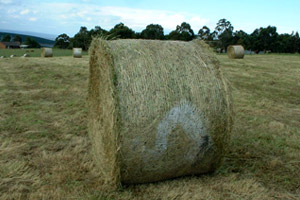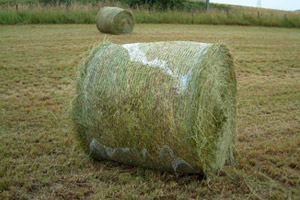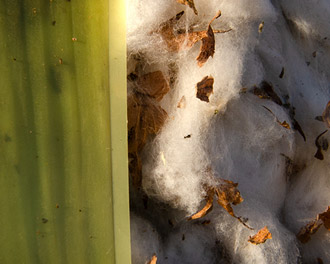Under Pressure
2014
Last week I was called to inspect a problem with netwrap on a farm in the far east of Hungary. Now, many of you may be surprised at the relevance this might have to your own farming methods, but trust me, this situation is more common than you might imagine. Read more
My Salesman for Hungary had received a report of bales made in July, bursting in the bale stack over the winter. The farmer was perplexed as to why this should be, and had his sights set firmly on the net, which was the same brand and manufacturer as he had always used, with the same strength, but a slightly different type. After a long journey to visit and inspect, things became much clearer….
The farming operation makes up to 20,000 bales annually, using 3 variable chamber balers, from two different OEMs, making both hay and cereal straw bales. It turned out that, as well as changing his net, he had also upgraded one of his balers to the latest and highest specification model from a very well-known manufacturer of green equipment.
This machine has gained a very good reputation in the round baler market in the short time it has been available, for significantly increasing baler output and able to make bales of considerably higher density, and here-in lay the problem ! The bales from this baler were much more dense than those from the other balers, a fact easily identified by simply walking on top of the bales, where those from the new baler were rock solid, whilst the best the other baler could produce were still slightly spongy and soft when walking on them.
For those if you who know baling, it is easy to spot the difference between grass and cereal crops, however, many who know this difference often treat the crop the same when it comes to baling, which is the first step to creating big problems for yourself. Grass, be it hay, silage or dry haylage, is a leaf crop, heavy but not very lively when round baled. Cereal crops, on the other hand, are altogether different. Cereal is a dry, hollow stem crop, which is more difficult to compress than grass, it is also much lighter than grass so bales tend to be made bigger, creating more baled-up energy within the bale and therefore more pressure against the net.

Close investigation of the problem bales soon showed that there were a few points that the operator failed to consider and prepare for. The hay and straw bales were both wrapped with the same number of turns, first mistake in not countering the more explosive properties of the straw, so whilst the hay bales were just adequately contained, the more ‘explosive’ straw bales were already heading for problems in not having enough net to securely contain the crop.
Remember, any cereal crop that is cut ‘early’, when green, to make into a hay forage bale, is still a cereal; so when it dries out will take on the characteristics of straw!
Secondly, and often not considered at all when round baling, was the accuracy of the baler in applying the net onto the bale. Once the ‘correct’ number of turns for the crop type and bale diameter have been established, it is very important that the value set on the monitor for the quantity of net on the bale is actually what is being see ON the bale !

Many might think this is obvious, but more often than not, there are variances in the exact amount of net ON THE BALE SURFACE, with variations anywhere up to half a turn. I need to be clear that this is not particular to any make or model of baler, it will happen in all balers, and is a consequence of a number of factors related to the net feeding system on the baler. Poorly maintained or in-correctly adjusted balers can easily waste a lot of net, which in the end means less holding protection to the bale. If the feeding system on the baler is allowing part of the net length going into the baler to be ‘lost’, the expected length of net ‘ON’ the bale is reduced.
Things such as net tension, correctly adjusted feeding rollers, net guide plates being clean and free from dirt or crop residue, sharp and accurately set cutting device in the baler. Even the shape and density of the bale has an effect on how well the net will be applied to the bale, so don’t consider it not a valid part of your baling operation to assume that the bale will be well covered simply by setting the number of turns in the monitor !







This is fascinating – the need to really take account of what’s inside the bale and what’s actually going around the outside of the bale all makes perfect sense. Yet it could so easily be overlooked during baling operations. Nobody wants bales to fail, particularly given the productivity gains on offer. Paying more attention to what’s in the bale, and what it’s wrapped with, seems more important than ever.